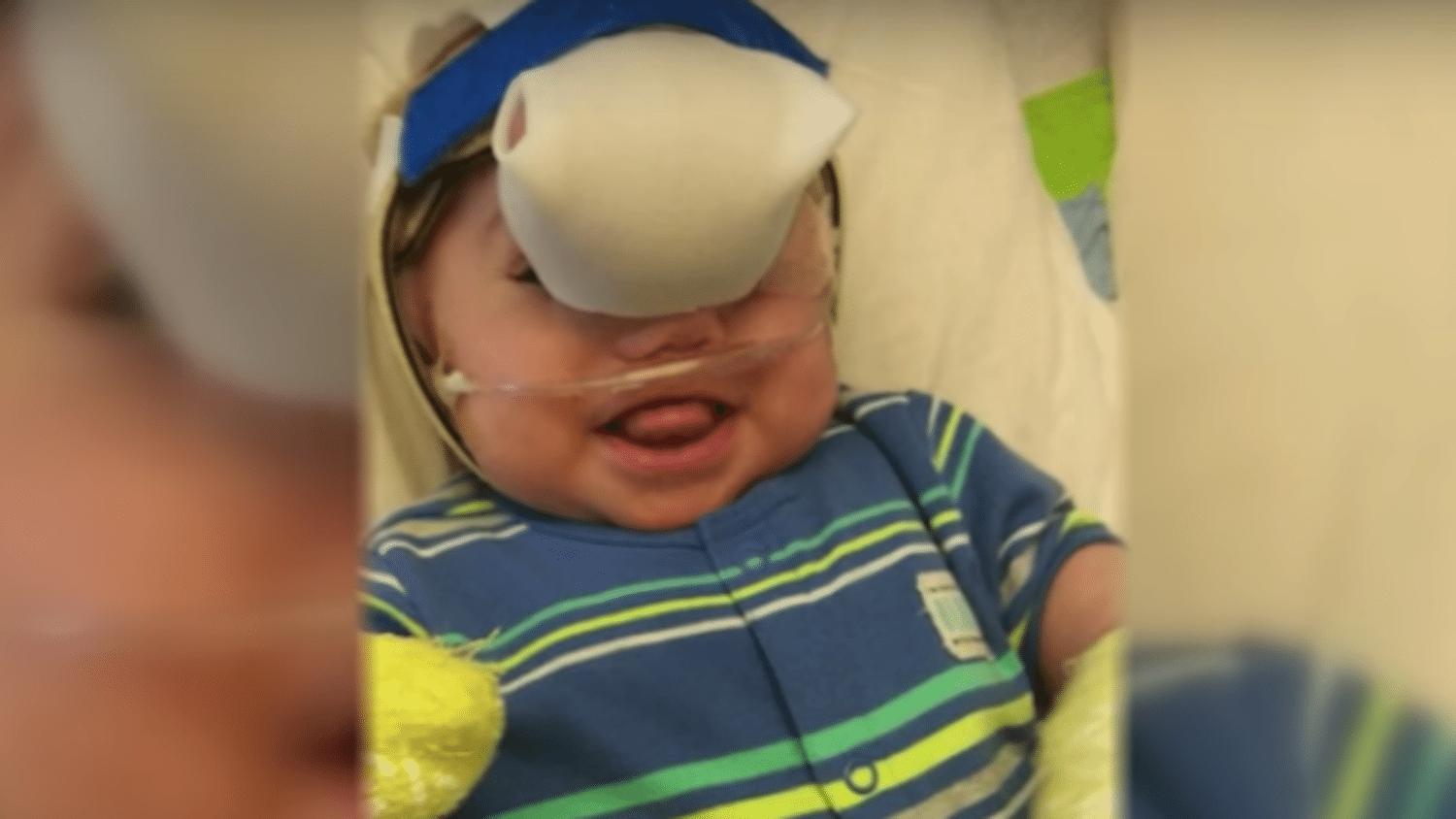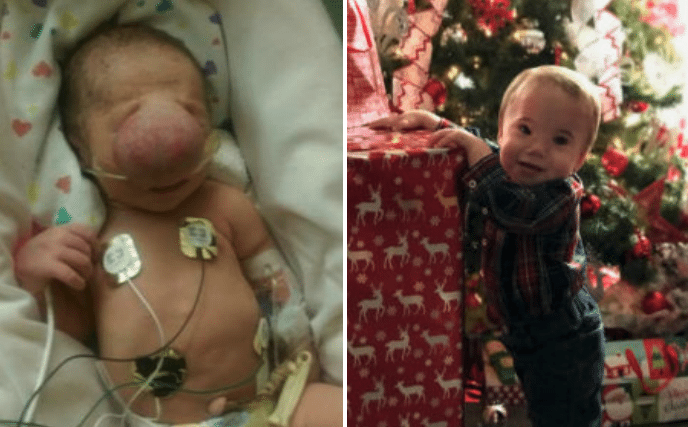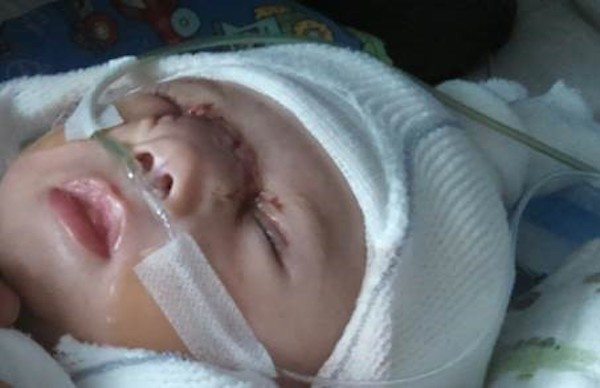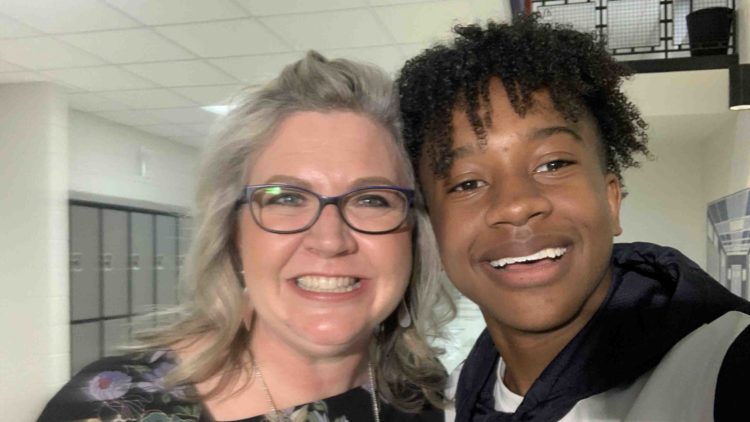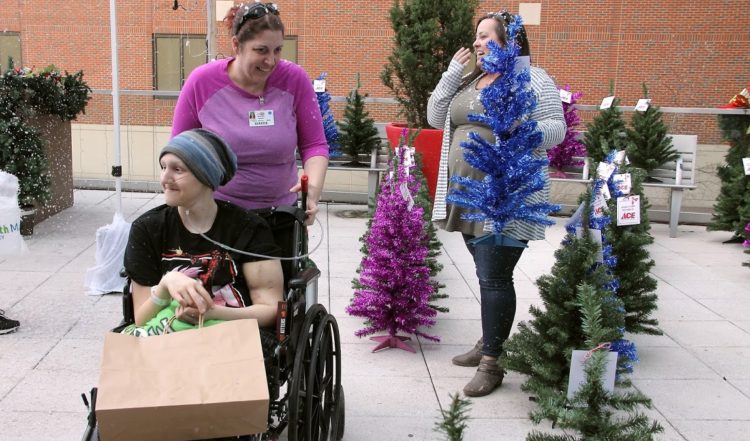Baby born with rare facial defect doing great 1 year later
Imagine seeing your baby for the first time but you aren’t able to look into his eyes. That’s exactly what Ohio mom Valeka Riegel went through in December 2016 when her son Zakary was born.
A rare birth defect called an encephalocele caused her son to be born with a large sac-like protrusion on his face. The protrusion, which extended from his forehead down to his upper lip, covered his eyes and nose.
An encephalocele is caused when a baby’s neural tube does not close completely while in utero. As a result, babies can be born with protrusions of the brain that manifest as large sacs filled with brain tissue or cerebrospinal fluid. The encephalocele causes a groove either down the middle of the skull, between the forehead and nose (as in the case of Zakary) or on the back side of the skull.
In a blog post she wrote about Zakary’s condition for Cincinnati Children’s Hospital, Riegel, who was 45 at the time of her pregnancy, said she found out he had an encephalocele during the fifth month. She said the diagnosis shook her faith. “For five months, I cried, became angered, fearful and resentful of God,” she wrote.
The Centers for Disease Control and Prevention estimates that only 1 in 12,000 babies born in the U.S. have encephalocele. The rare defect often comes with craniofacial abnormalities or other brain damage. Symptoms can include vision problems, seizures, mental and growth retardation, ataxia (spastic muscle movement) and paralysis.
“Why would (God) bring you into my life, at the age of 45? Only to become a statistical probability of surviving 1 in 5,000 live births?” Riegel wrote. “I was confused. As a nurse, I had medicine to believe in. But as a mom, I chose to surrender my faith.”
While the exact cause of encephalocele is unknown, genetics are believed to be a factor. Research has shown that it often occurs in families with other neural tube defects such as spina bifida or anencephaly. Premature births, low birthweight or being African American are also considered contributing factors.
Even though she couldn’t see much of his little face, Riegel said from moment she first saw Zakary, he was “beautiful.” Thankfully, after several intense surgeries and 135 days in the hospital, Zakary was able to make the drive back toward Toledo with his mom. Doctors were able to remove the protrusion and repair his face with “minimal” scarring, according to Riegel.
For now, treatment of an encephalocele is limited to surgery after the baby is born. Recovery is dependent on how much brain tissue is involved and where the damage has occurred. Generally if the sac consists mostly of fluid, a complete recovery is possible. If there is a large amount of brain tissue, the chance of brain damage is higher. If the surgery is a success, as it was in Zakary’s case, and developmental delays have not occurred, the baby can develop normally.
As for Zakary, who recently turned 1, he is a happy healthy baby and his mother is not taking anything for granted. “I don’t know what lies ahead for our journey, but I do know we will cherish every moment we are granted together,” Riegel wrote.
Watch a video about Zakary’s journey below.


